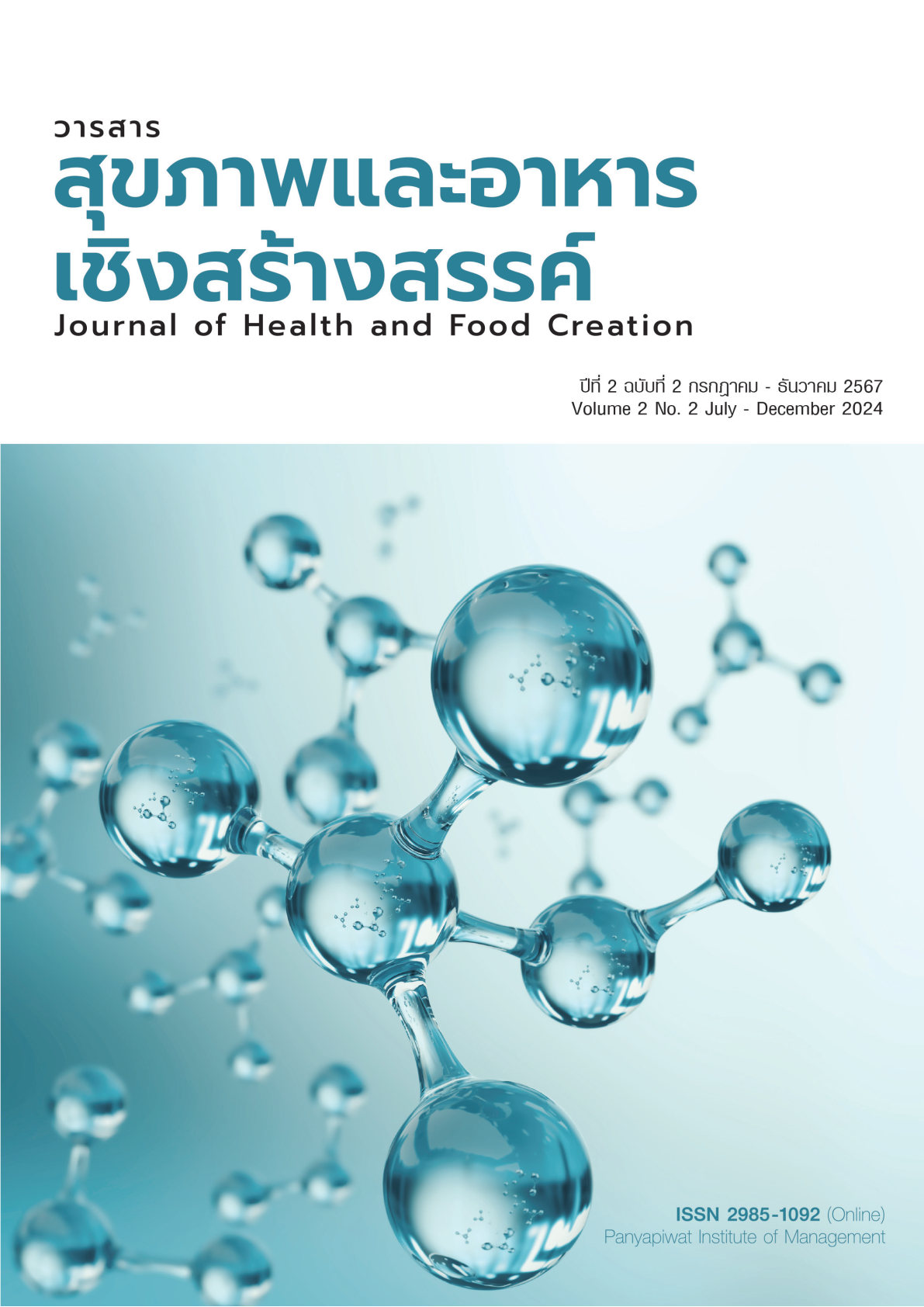การลำเลียงผู้ป่วยทางอากาศ: บทบาทของพยาบาลในการดูแลผู้ป่วยวิกฤตในการเคลื่อนย้ายทางอากาศ
คำสำคัญ:
การลำเลียงผู้ป่วยทางอากาศ, บทบาทของพยาบาล, ผู้ป่วยวิกฤตบทคัดย่อ
การลำเลียงผู้ป่วยทางอากาศเป็นการส่งต่อผู้ป่วยที่มีประสิทธิภาพ รวดเร็ว เพื่อลดอัตราการบาดเจ็บ ทุพพลภาพ และเสียชีวิต ผู้ป่วยมีโอกาสเข้ารับการรักษาในสถานพยาบาลที่มีศักยภาพ พยาบาลที่ดูแลผู้ป่วย ขณะลำเลียงทางอากาศต้องมีความรู้เรื่องหลักการสำคัญของการเคลื่อนย้ายผู้ป่วยฉุกเฉินทางอากาศ ประกอบด้วยสรีรวิทยาการบิน ความเครียดจากการบิน การเตรียมอุปกรณ์การแพทย์ที่เหมาะสมและเพียงพอกับการเคลื่อนย้ายผู้ป่วยทางอากาศ การจดประเภทผู้ป่วยก่อนลำเลียงทางอากาศ ความเข้าใจถึงบทบาทพยาบาล ในการดูแลผู้ป่วยก่อนลำเลียง ได้แก่ การวางแผนปฏิบัติภารกิจการลำเลียง การเตรียมความพร้อมของร่างกาย และจิตใจของพยาบาล การศึกษาข้อมูลชนิดของอากาศยาน อัตราการจัดบรรทุก เส้นทางการบิน ระยะทาง ระยะเวลา สภาพอากาศ และระดับความสูงที่ใช้ในการบิน รวมทั้งตระหนักถึงบทบาทพยาบาลขณะลำเลียง และหลังการลำเลียง การทำาหัตถการทางการพยาบาลตามขอบเขตโดยยึดหลักการพยาบาลที่สำาคัญ คือ ความปลอดภัยระหว่างการลำเลียงผู้ป่วยทางอากาศ
บทความนี้นำเสนอบทบาทของพยาบาลในการลำเลียงผู้ป่วยทางอากาศยาน และเป็นแนวทางใน การพัฒนาบุคลากรเพื่อเตรียมความพร้อมในการดูแลผู้ป่วย ซึ่งจะช่วยลดอัตราการเสียชีวิตและบาดเจ็บขณะ นำส่งผู้ป่วยไปโรงพยาบาล
เอกสารอ้างอิง
Chainarong, I. (2019). Roles of flight nurses in stress of flight management for stroke patient: Aeromedical evacuation. Journal of Nursing Science & Health, 42(1), 140-149.
Deerungroj, E. (2021). Aeromedical evacuation: Sick or injured police officers air transportation by police medical evacuation center police general hospital. Journal of the Police Nurse, 13(1), 208-217. [in Thai]
Green, M., Harris, L., & Carter, R. (2020). Safety measures in aeromedical evacuations. Journal of Patient Safety, 27(5), 45-50.
Jodie, M., & Koshila, K. (2020). Education needs of Australian flight nurses: A qualitative study. Air Medical Journal, 39(3), 178-182.
Johnson, R., & White, C. (2021). Impact of flight altitude on critical care patients. Aerospace Medicine Journal, 42(1), 15-22.
Jones, A., & Brown, L. (2017). Intravenous therapy in critical care settings. Critical Care Nursing Quarterly, 30(2), 56-62.
Kamtip, B., & Sutham, K. (2018). Aeromedical service guideline revision health region Northern Thai sky doctor emergency. National Institute for Emergency Medicine. [in Thai]
National Institute for Emergency Medicine. (2014). Emergency aeromedical service guideline revision 2014. National Institute for Emergency Medicine. [in Thai]
National Institute for Emergency Medicine. (2019). Annual report 2019. National Institute for Emergency Medicine. https://www.niems.go.th/1/Ebook/Detail/10123?group=23 [in Thai]
Piyasuwankun, T. (2018). Southern aeromedical transport manual. National Institute for Emergency Medicine. [in Thai]
Smith, J., Johnson, A., & Lee, T. (2020). Trauma care and brain injury: Clinical guidelines. Journal of Emergency Medicine, 25(4), 123-130.
Thikhaphinya, B. (2014). Nursing care for cardiovascular and coronary heart disease during air. Journal of the Police Nurse, 6(2), 265-274. [in Thai]
Thomas, P., Williams, K., & Thompson, J. (2019). Oxygen therapy in emergency and transport medicine. Journal of Respiratory Therapy, 18(3), 98-105.
Thongpaknum, C. (2018). Aeromedical Evacuation of obstetric patients. Journal of the Police Nurse, 10(2), 422-432. [in Thai]
Verayangkura, N. (2014). Aviation physiology for aeromedical transportation: Emergency aeromedical service guideline revision (2nd ed.). National Institute for Emergency Medicine. [in Thai]
ดาวน์โหลด
เผยแพร่แล้ว
รูปแบบการอ้างอิง
ฉบับ
ประเภทบทความ
สัญญาอนุญาต
ลิขสิทธิ์ (c) 2024 วารสารสุขภาพและอาหารเชิงสร้างสรรค์

อนุญาตภายใต้เงื่อนไข Creative Commons Attribution-NonCommercial-NoDerivatives 4.0 International License.
“ข้าพเจ้าและผู้เขียนร่วม (ถ้ามี) ขอรับรองว่า บทความที่เสนอมานี้ยังไม่เคยได้รับการตีพิมพ์และไม่ได้อยู่ระหว่างกระบวนการพิจารณาลงตีพิมพ์ในวารสารหรือแหล่งเผยแพร่อื่นใด ข้าพเจ้าและผู้เขียนร่วมยอมรับหลักเกณฑ์การพิจารณาต้นฉบับ ทั้งยินยอมให้กองบรรณาธิการมีสิทธิ์พิจารณาและตรวจแก้ต้นฉบับได้ตามที่เห็นสมควร พร้อมนี้ขอมอบลิขสิทธิ์บทความที่ได้รับการตีพิมพ์ให้แก่สถาบันการจัดการปัญญาภิวัฒน์หากมีการฟ้องร้องเรื่องการละเมิดลิขสิทธิ์เกี่ยวกับภาพ กราฟ ข้อความส่วนใดส่วนหนึ่งและ/หรือข้อคิดเห็นที่ปรากฏในบทความข้าพเจ้าและผู้เขียนร่วมยินยอมรับผิดชอบแต่เพียงฝ่ายเดียว”






